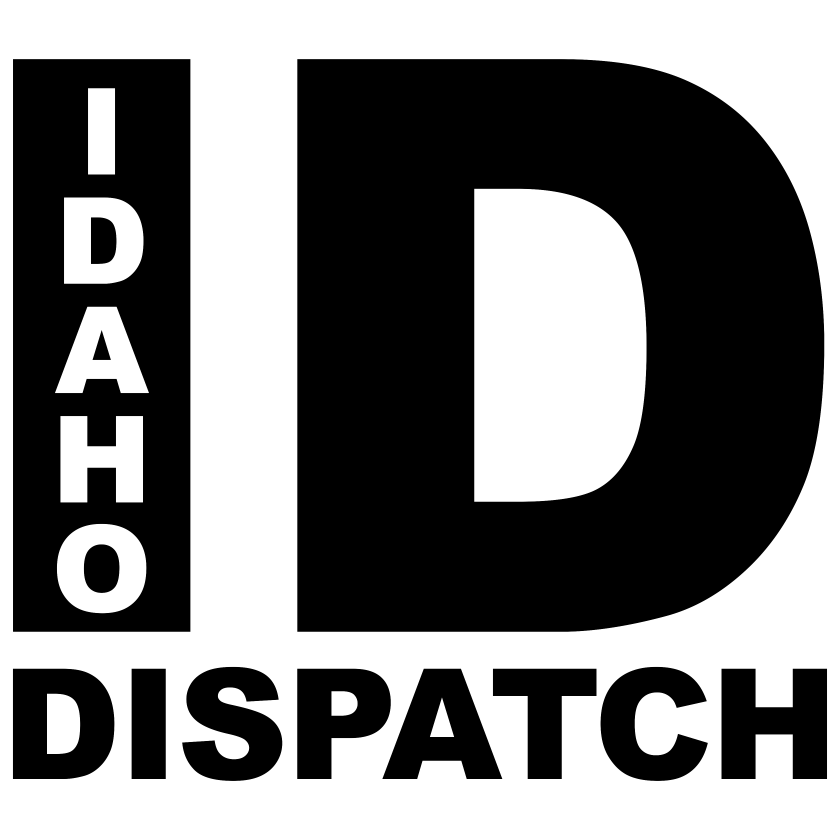
Mining Projects Across Idaho
By Sarah Clendenon • June 26, 2024Recently the Idaho Dispatch brought you information on Idaho supplying the world with cobalt through mining that has begun near Salmon. But cobalt is not the only precious commodity beneath our feet. Plans and methods for extracting gold, silver, and antimony from the land are topics of discussion again as projects are underway in Owyhee County on the west side of the state, near Kilgore on the east side of the state, and the possible re-opening of the Stibnite Mining District in the Payette National Forest just outside McCall.
Mining activities on “federal land” are regulated by the Bureau of Land Management (BLM) which is governed by the United States Department of the Interior. From their mining information and history page,
“The Mining Law, as amended, opened the public lands of the United States to mineral acquisition by the location and maintenance of mining claims. Mineral deposits subject to acquisition in this manner are generally referred to as “locatable minerals.” Locatable minerals include both metallic minerals (gold, silver, lead, copper, zinc, nickel, etc.) and nonmetallic minerals (fluorspar, mica, certain limestones and gypsum, tantalum, heavy minerals in placer form, and gemstones). It is very difficult to prepare a complete list of locatable minerals because the history of the law has resulted in a definition of minerals that includes economics.
AdvertisementStarting in 1873, the Department of the Interior began defining locatable minerals as those minerals that are:
-
recognized as a mineral by the standard experts,
-
are not subject to disposal under some other law, and
Advertisement -
make the land more valuable for mining than for farming.”
The operation in Owyhee County comes from a Canadian company, Integra Resources. It is called the DeLamar Project.
“The DeLamar project is situated in the Owyhee Mountains near the east margin of the mid-Miocene Columbia River – Steens flood-basalt province and the west margin of the Snake River Plain. The Owyhee Mountains comprise a major mid-Miocene eruptive center, generally composed of mid Miocene basalt flows and younger, mid-Miocene rhyolite flows, domes, and tuffs, developed on an eroded surface of Late Cretaceous granitic rocks.
Earth Resources and NERCO geologists defined a local volcanic stratigraphic sequence in the DeLamar area.
Gold-silver mineralization has been recognized in two types of deposits: within 1) relatively continuous, quartz-filled fissure veins that were the focus of late 19th and early 20th century underground mining, and 2) broader, bulk-mineable zones of closely-spaced quartz veinlets and quartz-cemented hydrothermal breccia veinlets that are individually continuous for only a few feet laterally and vertically, and of mainly less than 1.3 centimeters in width. This second type of mineralization was mined in the open pits of the late 20th century DeLamar operation.”
Former Idaho Governor Butch Otter was appointed to the Integra Board of Directors in 2019. From the company’s press release,
“The Board is both excited and extremely honored to welcome Butch to the Integra team,” stated Stephen De Jong, Chairman of the Board of Integra Resources. “Butch’s can-do attitude, along with his extensive knowledge of Idaho’s demographical landscape and proud dedication to serving Idahoans will be a fantastic addition to the Board as we continue to advance the DeLamar Project…
Integra Resources is a development stage mining company focused on the advancement of its DeLamar Gold-Silver Project (the “Project”) located in Owyhee County, 18 miles east of the ranching town Jordan Valley. The DeLamar Project consists of the two past-producing DeLamar and Florida Mountain Mines which shut down in the late 1990’s due to extremely low precious metal prices…
Butch Otter has been granted incentive stock options in conjunction with his appointment to the Board of Directors, exercisable to purchase in aggregate up to 250,000 common shares in the capital of the Company until September 16th, 2024, at an exercise price of $1.31 per share. The options were granted in accordance with Integra’s Stock Option Plan and are subject to vesting provisions.”
Integra Resources Board of Directors.

Excellon Idaho Gold has initiated the Kilgore Project in eastern Idaho. The company’s website says,
“Excellon Idaho Gold is a U.S. company incorporated in the State of Idaho. As a subsidiary of Excellon Resources Inc., Excellon Idaho Gold embraces the same vision and values of its parent company.”
The parent company, Excellon Resources Inc., is a Canadian company based in Toronto, Ontario – just across Lake Ontario from New York.
“The Kilgore Gold Exploration Project (the “Project”) is a mineral exploration project underway by Excellon Idaho Gold in the Dubois Ranger District of the Caribou-Targhee National Forest, approximately five air miles northwest of Kilgore, Idaho. Excellon Idaho Gold’s current project only contemplates mineral exploration through surface drilling, subsurface imaging, and surface sampling to determine the full potential of the site. It does not involve any commercial mining.
As the Project moves forward, it will require some additional construction, including roads and drill pads. Approximately ten miles of new roads have been approved, however, previously constructed roads, including already existing USFS roads, will be utilized whenever possible. Roads will be constructed using favorable topography or where roadbeds currently exist. Drill pads will be constructed at up to 130 locations within the footprint of existing and proposed roads to minimize disturbance. Further, drilling results will be analyzed concurrently and fewer road miles may be needed to complete the Project. Following USFS guidance and methodology, roads and drill pads will be reclaimed seasonally and finally reclaimed and closed when no longer needed.
The Project will help support local businesses in the area—including gas stations, restaurants, and equipment suppliers. Whenever possible, Excellon Idaho Gold is committed to purchasing goods and services locally and in the region.
The Project will be conducted in phases with up to three drill rigs at any time and will take between three to five years to complete.”
Because of the recent dispute concerning Idaho’s aquifer and water use for farmers (find the Idaho Dispatch coverage here), it is important to note this particular statement from the August 2023 press release by the Idaho Conservation League:
“The Kilgore Project is located at the headwaters of Camas Creek, within the Upper Snake River Basin. The streams in this watershed ultimately recharge the Eastern Snake Plain Aquifer, which provides drinking water to over 300,000 Idahoans. This water supply is also a key source of irrigation water that local farmers and ranchers depend upon for agricultural purposes.”
The entire press release:
Controversial Kilgore Mine Exploration Project Approved in East Idaho
Conservation groups had sought additional safeguards for the Snake River Aquifer
DUBOIS, IDAHO – On Friday, August 4, 2023, the Federal District Court sided with the Forest Service and Canadian mining company, Excellon Resources, approving the continuation of mine exploration activities in Idaho’s Centennial Mountains that put the wildlife, rural character, and water quality of the area and all those downstream at serious risk. The ruling allows the mining company to proceed with a five-year exploratory drilling project which entails the construction of 10 miles of new roads, clearing 140 drill pads, drilling up to 420 exploration holes in the mountainsides above West Camas Creek and Corral Creek, and all the dust, sedimentation, and noise pollution that comes with operating drill pads 24 hours a day, seven days a week, six months a year, for five years.
In March of 2022, conservation groups filed this lawsuit challenging the U.S. Forest Service’s latest approval of the Kilgore Gold Exploration Project in the Centennial Mountains near the agricultural community of Kilgore in eastern Idaho. The project, about 80 miles north of Idaho Falls on the Caribou-Targhee National Forest, was overwhelmingly opposed in over 3,000 comments submitted to the agency last year for its potential to threaten water quality, wildlife, and the way of life for thousands of Idahoans.
If Excellon determines that the underlying geology contains enough gold to make mining profitable in this area, the company has indicated their desire to develop an open-pit, cyanide heap-leach gold mine. This form of mining has been outlawed in neighboring Montana since 1998 for the significant threat it poses to human health and its track record of contaminating adjacent surface water and groundwater with cyanide.
The Kilgore Project is located at the headwaters of Camas Creek, within the Upper Snake River Basin. The streams in this watershed ultimately recharge the Eastern Snake Plain Aquifer, which provides drinking water to over 300,000 Idahoans. This water supply is also a key source of irrigation water that local farmers and ranchers depend upon for agricultural purposes.
The conservation groups that filed suit against the Forest Service – Idaho Conservation League (ICL) and the Greater Yellowstone Coalition (GYC) – were represented in the lawsuit by Advocates for the West and the Western Mining Action Project. These groups successfully challenged a similar version of this project in 2020, and most recently asked the Forest Service for additional safeguards and monitoring to protect surface and groundwater resources from mine exploration activities.
“Once hardrock mines like these get developed, it’s too late,” said GYC’s Idaho Conservation Coordinator Kathy Rinaldi. “The mining companies have said the only way mining makes economic sense at Kilgore is to use cyanide heap-leach, and these types of mines almost always leak into and contaminate water. With thousands relying on Idaho’s water, we can’t risk compromising it with cyanide, or compromise the livelihoods of the working families who rely on this resource.”
In the coming days, GYC, ICL, and Advocates for the West will continue to evaluate all available legal and administrative means to prevent a mine in this remarkable corner of Idaho.
“The Centennial Mountains are more valuable as a source of clean water for the Snake River Plain Aquifer than as a target for industrial mining,” said John Robison with the Idaho Conservation League. “If Excellon Resources moves toward additional drilling or open-pit, cyanide heap-leach mining, we will need additional community involvement to push back and protect this critical landscape.”
Concerned community members can speak up for clean water in the headwaters of the Snake River by joining the Clean Kilgore Coalition at https://www.protectkilgore.org/takeaction.
###
ICL works to ensure that mining activities don’t threaten human health, special places, or Idaho’s clean water. ICL scrutinizes proposed new mines, improves those that are acceptable, and fights those that are not in Idaho’s best interests. Visit ICL online at https://www.idahoconservation.org/.
GYC is a conservation organization that works with people to protect the lands, waters, and wildlife of the Greater Yellowstone Ecosystem, now and for future generations. GYC has a long history of reviewing mining projects to protect a vision of a healthy and intact Greater Yellowstone Ecosystem, where critical lands, waters, and wildlife are adequately protected. Visit GYC online at www.greateryellowstone.org.
In 2021 this source described the project this way:
“Initiated by Otis Gold, the Kilgore Project, as it’s called, is in Caribou-Targhee National Forest a few miles northwest of the Clark County village of Kilgore. With fewer than 900 residents, Clark is Idaho’s least-populated county. Its official 2019 unemployment rate was 3.3 percent. While the county — larger than Rhode Island — has a distant history of mining, today ranching and farming dominate the economy.
The mountains targeted by the Kilgore Project rise east of I-15, south of West Camas Creek and north of Idmon Road. To get the gold, the mountains must go.
The area is a destination for RV camping, ATV riding, hunting and hiking. It is bear country, where even grizzlies have been reported. Corral Creek is home to an isolated population of Yellowstone cutthroat trout, listed by state and federal agencies as a species of special concern. As creeks flow southward from the project area, they merge into Camas Creek, one of four small rivers that help recharge the eastern Snake River Plain aquifer.”
Idaho Conservation League (ICL) reports that Perpetua Resources is planning a reopening of the Stibnite site near McCall for a project called the Stibnite Gold Project. They say,
“Mining company Perpetua Resources (formerly Midas Gold) is in the advanced stages of permitting a massive open-pit cyanide vat leach mine at the Stibnite site. The Stibnite Gold Project is being presented as a restoration project and Perpetua highlights several notable conservation goals such as restoring fish passage through the historic mine pit and stream habitat improvements, but a closer look at other elements of the plan raises alarm…”
You can read the list of the ICL’s concerns by visiting the link above.
From this source regarding Stibnite,
“A Canadian gold-mining company’s planned open-pit cyanide-leach gold mine in Idaho’s Salmon River Mountains would threaten public health and clean water, harm endangered species, violate indigenous treaty rights, and permanently scar thousands of acres of public land in the headwaters of the South Fork Salmon River, according to a coalition of local and national conservation groups.
In more than 300-pages of comments submitted Jan. 9, 2023, to the U.S. Forest Service, the groups urged the Forest Service to reject a Canadian corporation’s proposed Stibnite Gold Project (SGP).
The proposal is to resume mining activities in the Stibnite Mining District on the Payette National Forest.
Groups challenging the proposed mine said officials should instead accelerate clean-up efforts at the site, which is an eligible Superfund site, polluted from decades of cyanide leach gold mining and milling.
“Cyanide-leach gold mines have an abysmal track record for water pollution, and Stibnite appears to be no different,” said Bonnie Gestring, Northwest program director at the Montana-based conservation group Earthworks.” “
This recent article from Boise State Public Radio explains that Stibnite permits are still pending, but a government bank has begun talks of financing the initial costs of the project.
“The company planning to resurrect gold and antimony mining in Valley County’s historic Stibnite district could get most of its operation start-up costs covered by financing from the government-backed Export-Import Bank (EXIM).
Perpetua Resources announced it received a “letter of interest” from the bank through its “Make More in America” and “China and Transformational Exports Program.”
“From EXIM’s potential financing of up to $1.8 billion to the multiple Department of Defense’s multi-million-dollar awards to Perpetua, there is a profound recognition that we need domestic antimony production now. The EXIM debt funding could fund a substantial portion of the estimated costs to build the Stibnite Gold Project,” said Perpetua President and CEO Jon Cherry in a news release.”
The article describes antimony as a “critical mineral” needed for energy and defense. The goal is to obtain this mineral domestically, instead of having to import it from other countries.
Feature photo is a 2020 image tweeted by Integra Resources. The caption reads: “Integra Resources CEO @GeorgeSalamis and Integra Board Members Anna Ladd-Kruger, @EXN_Resources CFO, and Butch Otter, former Governor of Idaho, attended the 32nd Canadian Mining Hall of Fame Annual Dinner and Induction Ceremony in Toronto last night!”
Tags: BLM, Bureau of Land Management, Butch Otter, Cobalt, Crops, cyanide, Eastern Snake Plain Aquifer, ESPA, Farming, Federal Land, gold, Kilgore, McCall, mining, open-pit, Owyhee County, Payette National Forest, silver, Stibnite, U.S. Department of the Interior, Water, Water Rights, water users
7 thoughts on “Mining Projects Across Idaho”
Comments are closed.








I am reminded of the truth in recognizing an eternal fact: The love of money is the root of all evil. This reeks of corruption, the kind which is steeped very, very deeply in the love of money. The water supplies, the land, and the former government officials looking to join in that havoc by supplying information that should remain hidden from these parasitic companies will potentially spell disaster for the regions involved and those who live there.
The agencies and individuals responsible for equipping its move forward are going to have to live with the consequences of their closed door glad-handing with unscrupulous companies not even located in Idaho that are giddy with their love of money and the evil which that love will wreak on our state. Tragic that no one seems to be able to stop it…
Butch has always liked to count other people’s money.
Butch and nearly all of the rest. Just like the feds, they literally care nothing for their constituents. If only we could turn government off and start to switch back on law enforcement, fire, roads etc.
and finally get any semblance of ACCOUNTABILITY from Little on down. We have none.
And we’re being raped.
Under no circumstances should a cyanide/leaching process be utilized in Idaho mining near an important water resource, PERIOD.
Is there a corporate mining project that does not result in damage to the environment??…polluting Idaho rivers and streams? As these mining activities are federally approved and taking place on BLM land in Idaho, Idahoans have no voice. A mining company hiring Butch Otter is comparable to the Ukrainian Burisma company hiring Hunter Biden. Perform an internet search and try to find a story (not a corporate ad) that reflects positively on corporate mining in Idaho….good luck. Try this one for starters: https://www.idahoconservation.org/our-work/public-lands/mining/
Well, it looks like Canadian mining companies are coming back to “rape, plunder and pillage more of our lands then go home with their profits. As usual, we will be left to clean up their pollution.
Hey people!!!!!
Good mood and good luck to everyone!!!!!